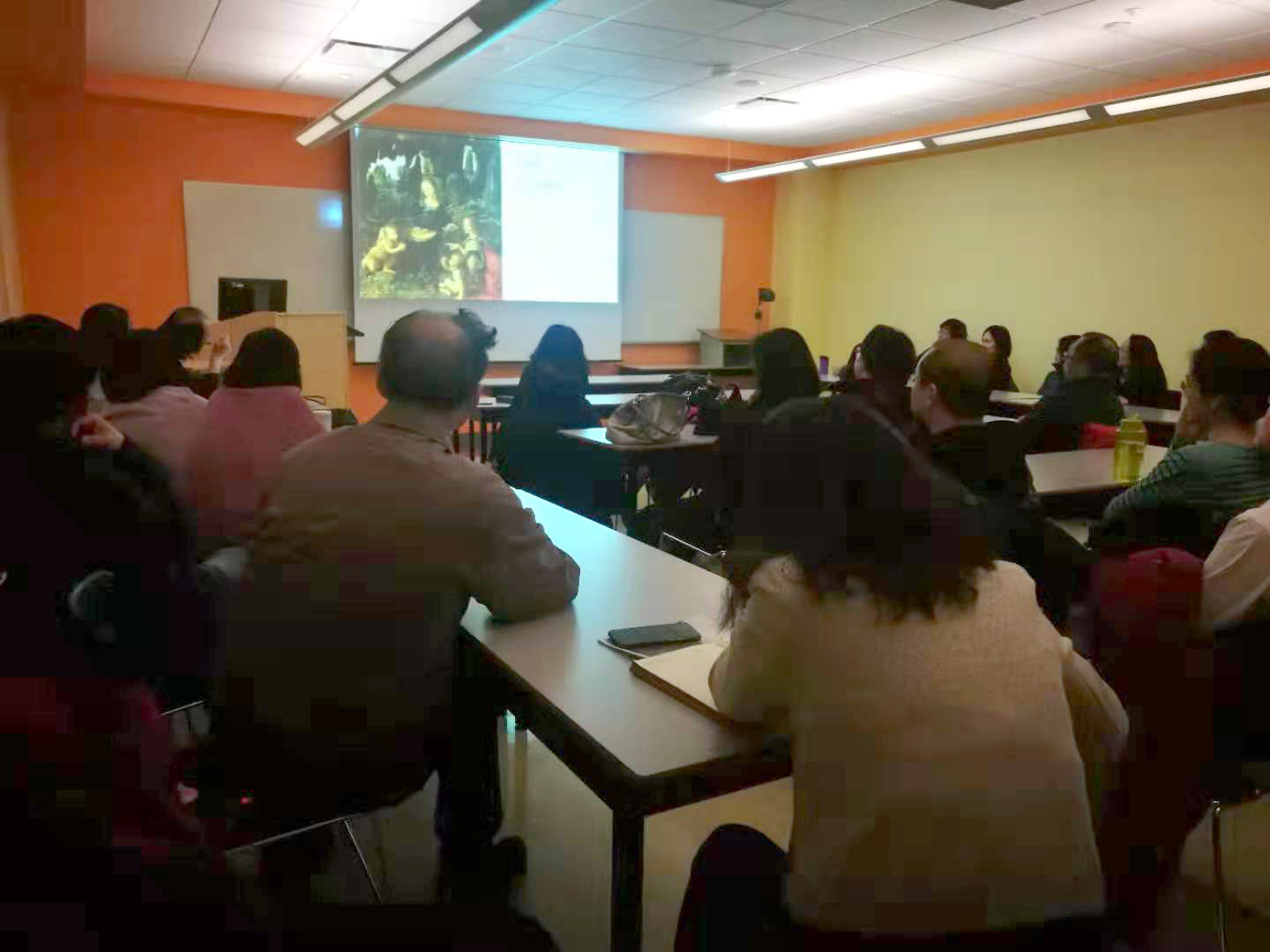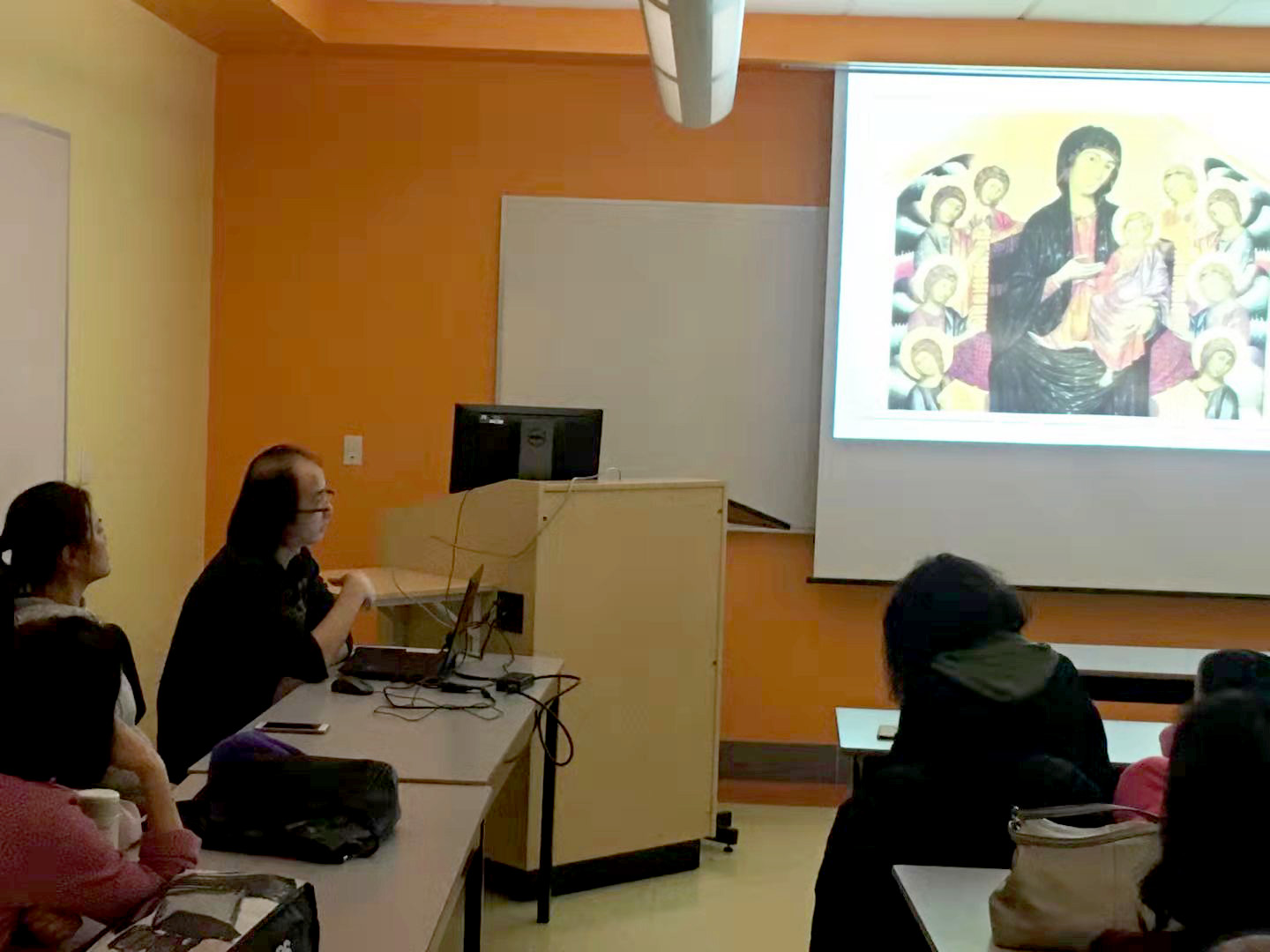Author: Adam Luo, Hu Di / Posted By Administrator /
December 1, 2019 106 Classroom, CCANB Chinese School

CCANB Public Lectures / Talks series
Speaker: Mr. Z. Yang
Date: December 1, 2019 (Sunday)
One of the most effective ways to connect people with different cultural backgrounds is through art. Due to its ability to transcend language and cultural boundaries, many newcomers see art as a great platform for learning and participating in Western culture.
As such, the CCANB was pleased to have visiting professor Yang give a presentation on the history of Western painting this past Sunday on December 1, 2019, at the Chinese school.

Professor Yang opened his talk by giving a brief history on the origin of painting in the western tradition. Western civilizations have a long history in creating visual arts. Artists of the ancient Mediterranean civilizations gave birth to organized art production. This is how the foundation of Western art traditions took root and started to flourish.
However, art soon after fell into a dark age, and it wasn't until the emergence of Christianity that artists in Europe were able to revive the visual arts. Art work in the Middle Ages were singularly focused on religion. This era was also characterized by primitive painting techniques and the emergence of professional print makers and painters.
The Renaissance witnessed the invention and adoption of revolutionary art techniques. Alongside this came a tectonic shift from religion to humanity, which gradually became the dominant theme in contemporary paintings. The advances in knowledge of the human anatomy and the use of linear perspective had a profound impact on western painting.
Professor Yang also introduced some of the major Renaissance artists and their work. He explained the significance of works such as the “Kiss of Judas”, “Pieta”, “Mona Lisa”, “David”, and “The School of Athens”. He also talked about the lives of Giotto, Titian, Da Vinci, Michelangelo, and Rafael. He shared some unique perspectives on the relationship between the church, the artists, and their creative works.
The professor then talked about a number of major artistic movements following the Renaissance, including the Baroque, Rococo, Neo-Classical and Romantic periods. In addition to elaborating on the artists of each movement, he also talked about the stories behind each major art piece and the socio-economic environment in which the works were created.
The presentation clearly sparked the interest of the audience, as members asked questions about relevant books and documentaries.
Visit http://www.ccanb.ca/article/category/seminar if you'd like to see the PowerPoint presentation and find out what else is coming up in our Speaker Series.
今天杨老师给大家介绍了很多西方经典画作。
西方绘画从古埃及到古希腊古罗马开始发展,但是遗憾的是出现了断层,直到中世纪才重新开始。
公元五世纪到十五世纪,中世纪的绘画主要围绕着宗教题材。技法比较幼稚,以技工画工为主。
文艺复兴开始有一个大的发展和飞跃,人性取代神性为主要方向,虽然还是以宗教题材为主,但是已经是普通人的形象。除了思想上的进步,绘画技术也有了大的发展,人体解剖,焦点透视,等等都开始应用。
杨老师介绍了如:油画之父乔托的《犹大之吻》,曼特亚尼(意大利)的《哀悼基督》,文艺复兴高峰期代表波提切里,提香的画作。还有文艺复兴鼎盛时期达芬奇的《蒙娜丽莎》,米开朗基罗的雕塑《大卫》,拉斐尔的《雅典学派》等等一系列经典作品。
杨老师也讲到了巴洛克风格的画家如维拉斯开兹,伦勃朗;洛可可风格的代表布歇;新古典主义,十九世纪初,代表大卫,安格尔以及浪漫主义代表籍里柯和德拉科洛瓦等人的经典作品,从画家的特点,作品含义,绘画技巧等不同方面引领不同角度的欣赏。
整场讲座座无虚席,大家纷纷表示通过杨老师的西方艺术讲座,加深了对西方文化艺术的认知,开阔了视野,这是一堂丰富多彩,生动活泼的艺术课,大家求知若渴,希望能有更多这样的讲座。
如果您有兴趣知道更详尽的内容,请查看PPT演示文稿或访问http://www.ccanb.ca/article/category/seminar。